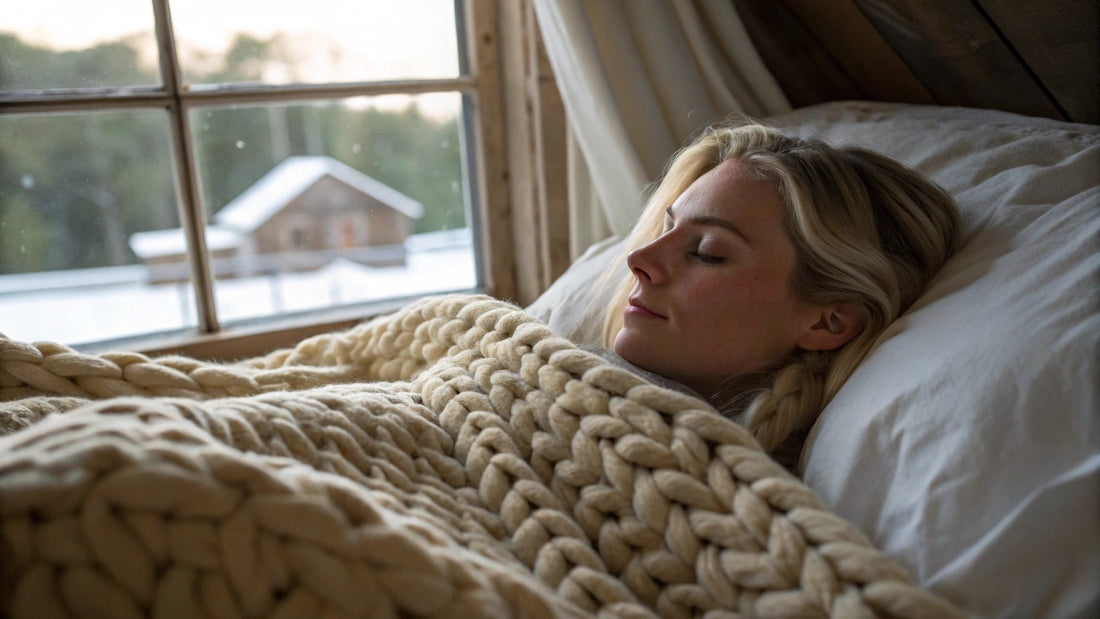
Weighted Blankets for Shift Workers: How They Can Improve Daytime Sleep
Working outside the typical daytime hours can wreak havoc on your sleep. Between battling circadian misalignment and daytime disruptions, many shift workers struggle to get restful sleep. Could a weighted blanket provide a supportive, gentle solution?
Quick answer: Weighted blankets offer deep pressure stimulation, which can help calm the nervous system, promote relaxation, and improve daytime sleep quality. For shift workers facing disrupted rhythms, this kind of sensory support may be especially beneficial.
1. Why Shift Workers Struggle to Sleep
Shift workers often face biological and environmental challenges that make sleep elusive:
-
Circadian misalignment—especially for night shift workers—disrupts natural sleep-wake cycles and melatonin production.
-
Many end up sleeping fewer hours than daytime workers, leading to chronic sleep deficits.
-
This ongoing lack of rest increases stress, fatigue, and overall health risk.
A weighted blanket won’t reset your body clock—but it may help ease the body into rest when sleep is out of sync.
2. How Weighted Blankets Promote Deeper Daytime Sleep
Weighted blankets deliver deep pressure touch (DPT)—a firm, even pressure similar to a hug. This supports relaxation by:
-
Activating the parasympathetic (rest-and-digest) nervous system to reduce stress and tension.
-
Encouraging the release of serotonin and melatonin, both crucial for sleep and mood balance.
-
Serving as a tactile anchor that can extend sleep duration and limit nighttime waking.
For a shift worker, this can mean more restorative naps and improved daytime sleep quality.
3. Practical Tips for Using a Weighted Blanket Effectively
To get the most from a weighted blanket, aim for a weight that’s about 10% of your body weight. This strikes the right balance between comfort and effectiveness—too light and it won’t have the intended calming effect, too heavy and it could feel restrictive. Use your blanket during naps or as part of your wind-down routine so your body learns to associate it with rest, no matter what time of day it is. For shift workers especially, pairing the blanket with a dark, cool, and quiet environment helps reinforce your brain’s sleep signals. Finally, be consistent and give yourself time to adapt to the sensation. Many people find the benefits increase with regular use.
4. Final Thoughts
Weighted blankets are not a cure for shift work sleep disorder—but they can be a powerful, non-pharmaceutical tool to enhance rest. By offering calming pressure and a sense of security, they're especially helpful for people trying to sleep out of sync with their body clock.
Summary: For shift workers grappling with daytime or disrupted sleep, a thoughtfully chosen weighted blanket can help bring a little rest and calm back to your routine.
FAQ
Can a weighted blanket help me nap better?
Yes. The grounding, calming effect of deep pressure can support quicker onset and more restorative naps.
Is it safe for all shift workers?
Generally yes—but avoid heavy blankets if you have certain medical conditions or breathing issues. Safety first.
Should I rely on the blanket instead of good sleep hygiene?
No. It’s most effective when used alongside healthy sleep practices like blackout curtains, consistent napping schedules, and minimizing late-day caffeine.



